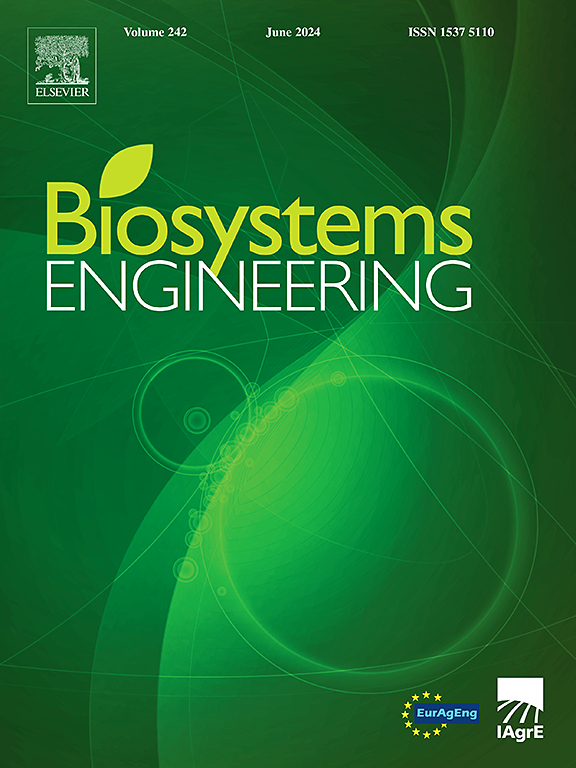High-throughput maize seed ears sorting through structural re-parameterisation classification model and multi-channel sorting system
IF 4.4
1区 农林科学
Q1 AGRICULTURAL ENGINEERING
引用次数: 0
Abstract
Sorting maize ears is critical to ensure the quality and purity of maize seeds. However, sorting is the most time-consuming and labour-intensive process, requiring an intelligent approach and automated device for high throughput. As a first step, this paper designs an automated image acquisition system based on sensor-triggered cameras to decrease the time and cost of producing ear dataset. Secondly, a structural re-parameterisation classification model is proposed, and this model achieved "deep training, shallow reasoning" by complicating the structure only during training and re-parameterising it to the original structure for inference, thus decoupling the complexity and the inference time. Then, the model trained on the PC is deployed in Nvidia TX2 NX, and the TensorRT is used to nearly double the model inference speed. This model reduces the demand for computational resources, thereby saving development costs. Subsequently, a multi-channel sorting system is developed based on the classification model, machine vision, sensors, and automatic control technologies to realise high-throughput ear sorting. Finally, the sorting experiments show that the average model’s classification accuracy on the dataset of multiple varieties is 97.25 %, demonstrating a good generalisation ability. The average sorting accuracy of the sorting system is 96.25 %, and the processing capacity of a single working channel is about 300 kg h−1, preparing the foundation for the subsequent development of an intelligent maize seed ear sorting device. This study can provide a reference for the sorting of other elongated crops.
采用结构再参数化分类模型和多通道分选系统对玉米种穗进行高通量分选
玉米穗分选是保证玉米种子质量和纯度的关键。然而,分拣是最耗时和劳动密集型的过程,需要智能方法和自动化设备来实现高吞吐量。首先,本文设计了一种基于传感器触发相机的自动图像采集系统,以减少生成耳朵数据集的时间和成本。其次,提出了一种结构再参数化分类模型,该模型通过只在训练时将结构复杂化,并将其重新参数化到原始结构进行推理,从而实现了复杂度和推理时间的解耦,实现了“深度训练,浅推理”。然后,将PC上训练好的模型部署在Nvidia TX2 NX上,使用TensorRT将模型的推理速度提高了近一倍。该模型减少了对计算资源的需求,从而节省了开发成本。随后,基于分类模型、机器视觉、传感器和自动控制技术开发了多通道分选系统,实现了高通量耳分选。最后,分类实验表明,该模型在多品种数据集上的平均分类准确率为97.25%,具有良好的泛化能力。分选系统的平均分选精度为96.25%,单工作通道处理量约为300 kg h−1,为后续智能玉米种穗分选装置的开发奠定了基础。本研究可为其他细长型作物的分选提供参考。
本文章由计算机程序翻译,如有差异,请以英文原文为准。
求助全文
约1分钟内获得全文
求助全文
来源期刊

Biosystems Engineering
农林科学-农业工程
CiteScore
10.60
自引率
7.80%
发文量
239
审稿时长
53 days
期刊介绍:
Biosystems Engineering publishes research in engineering and the physical sciences that represent advances in understanding or modelling of the performance of biological systems for sustainable developments in land use and the environment, agriculture and amenity, bioproduction processes and the food chain. The subject matter of the journal reflects the wide range and interdisciplinary nature of research in engineering for biological systems.
 求助内容:
求助内容: 应助结果提醒方式:
应助结果提醒方式:


